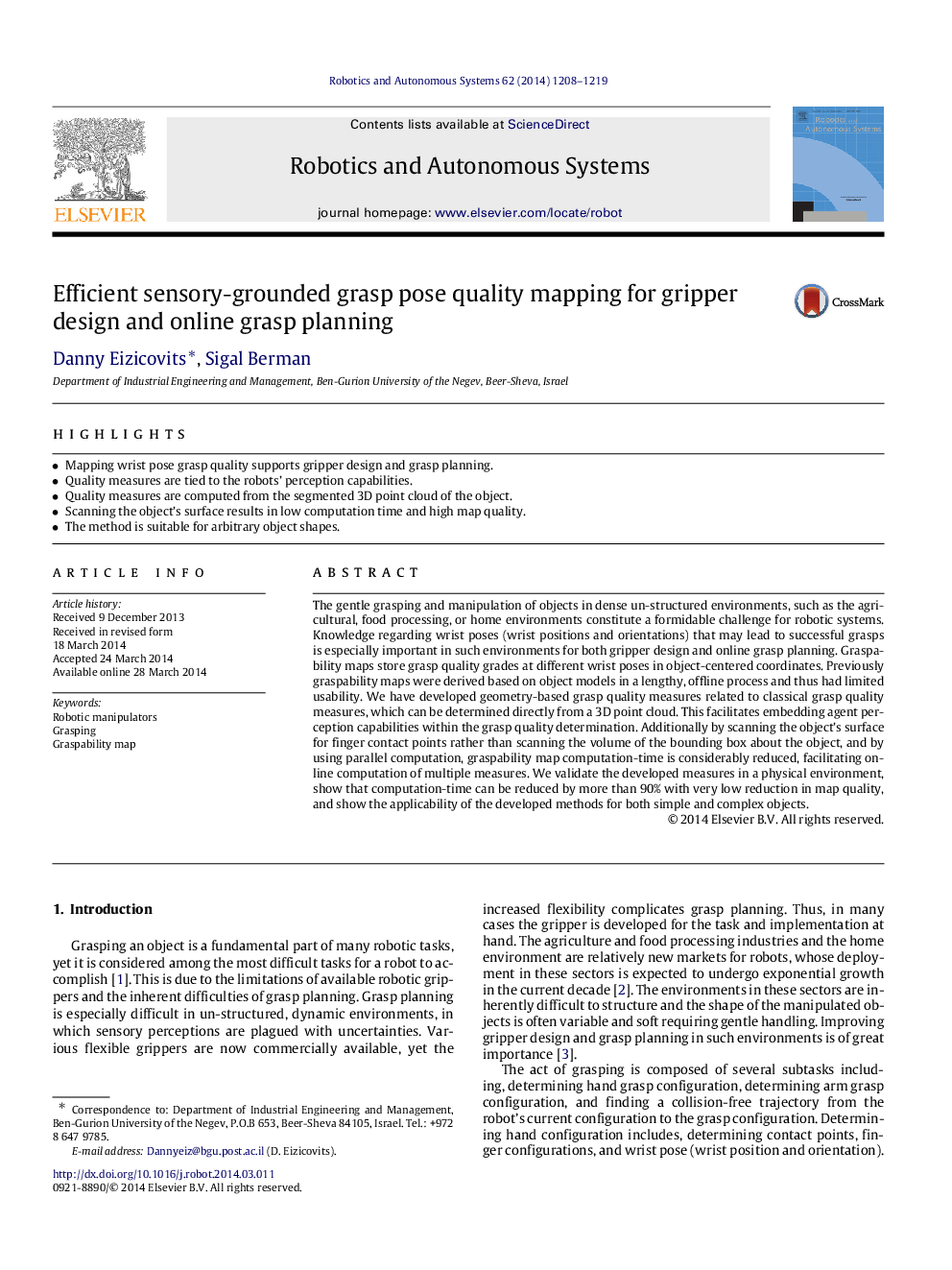| Article ID | Journal | Published Year | Pages | File Type |
|---|---|---|---|---|
| 411696 | Robotics and Autonomous Systems | 2014 | 12 Pages |
•Mapping wrist pose grasp quality supports gripper design and grasp planning.•Quality measures are tied to the robots’ perception capabilities.•Quality measures are computed from the segmented 3D point cloud of the object.•Scanning the object’s surface results in low computation time and high map quality.•The method is suitable for arbitrary object shapes.
The gentle grasping and manipulation of objects in dense un-structured environments, such as the agricultural, food processing, or home environments constitute a formidable challenge for robotic systems. Knowledge regarding wrist poses (wrist positions and orientations) that may lead to successful grasps is especially important in such environments for both gripper design and online grasp planning. Graspability maps store grasp quality grades at different wrist poses in object-centered coordinates. Previously graspability maps were derived based on object models in a lengthy, offline process and thus had limited usability. We have developed geometry-based grasp quality measures related to classical grasp quality measures, which can be determined directly from a 3D point cloud. This facilitates embedding agent perception capabilities within the grasp quality determination. Additionally by scanning the object’s surface for finger contact points rather than scanning the volume of the bounding box about the object, and by using parallel computation, graspability map computation-time is considerably reduced, facilitating online computation of multiple measures. We validate the developed measures in a physical environment, show that computation-time can be reduced by more than 90% with very low reduction in map quality, and show the applicability of the developed methods for both simple and complex objects.
